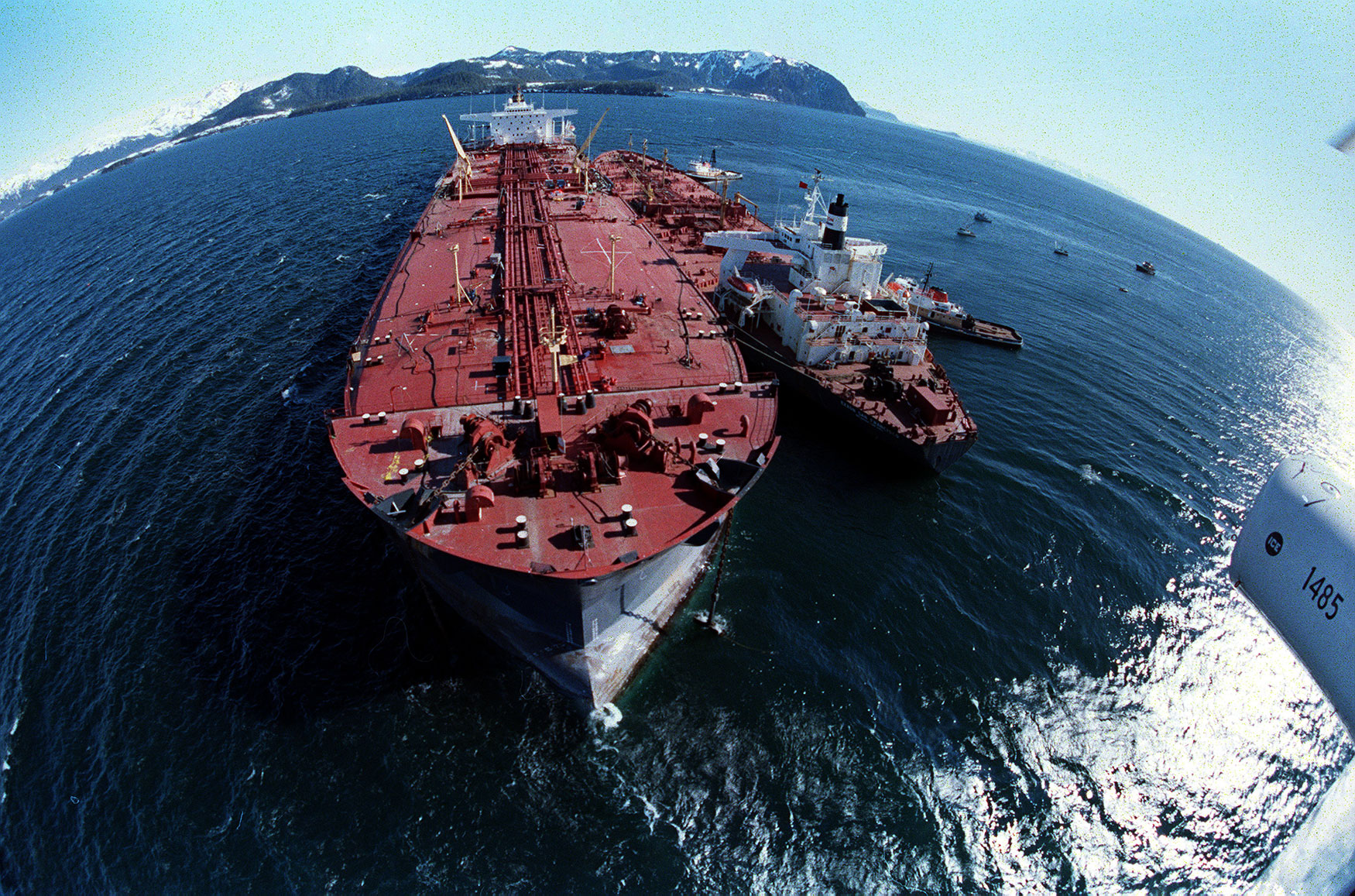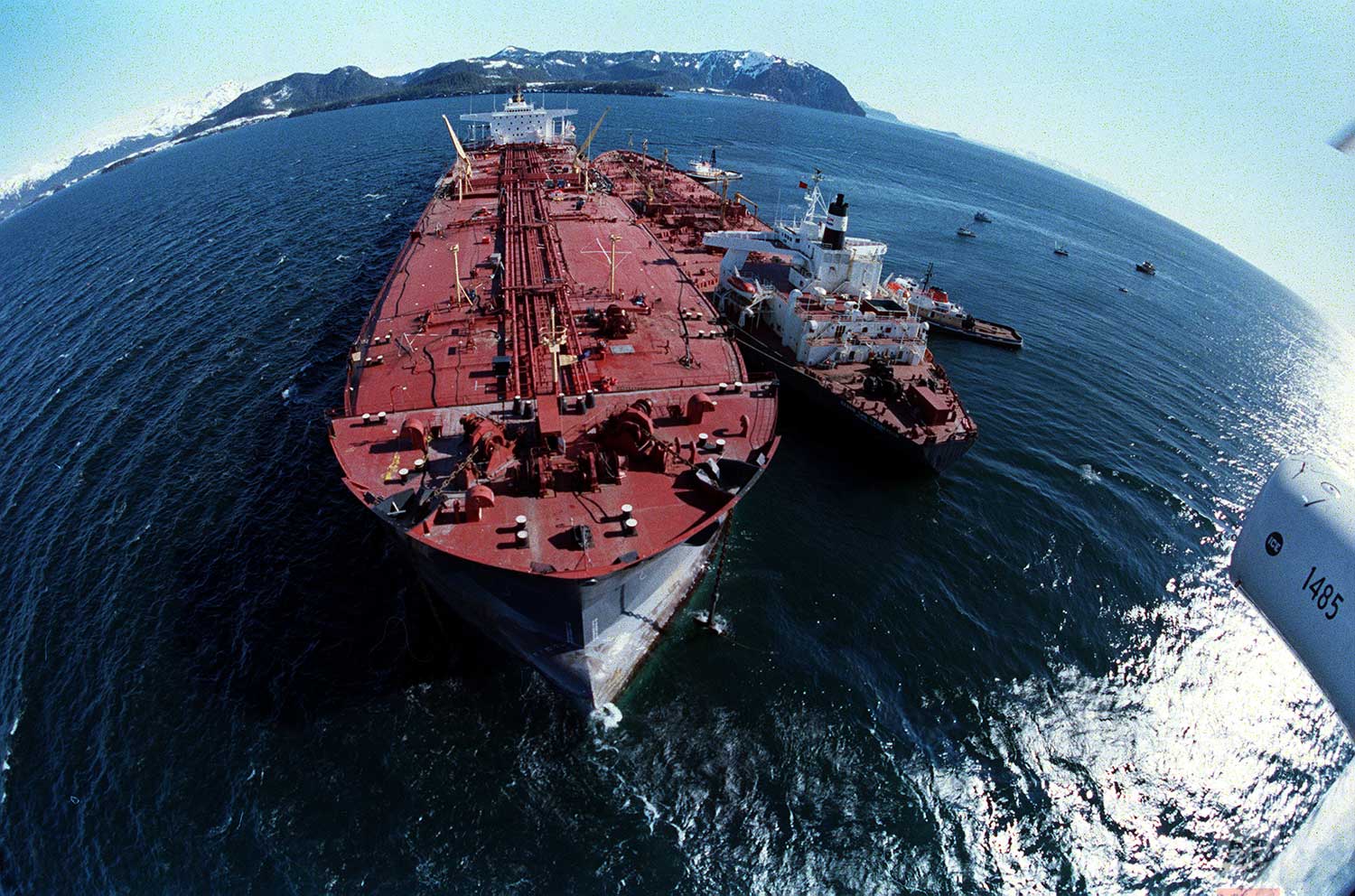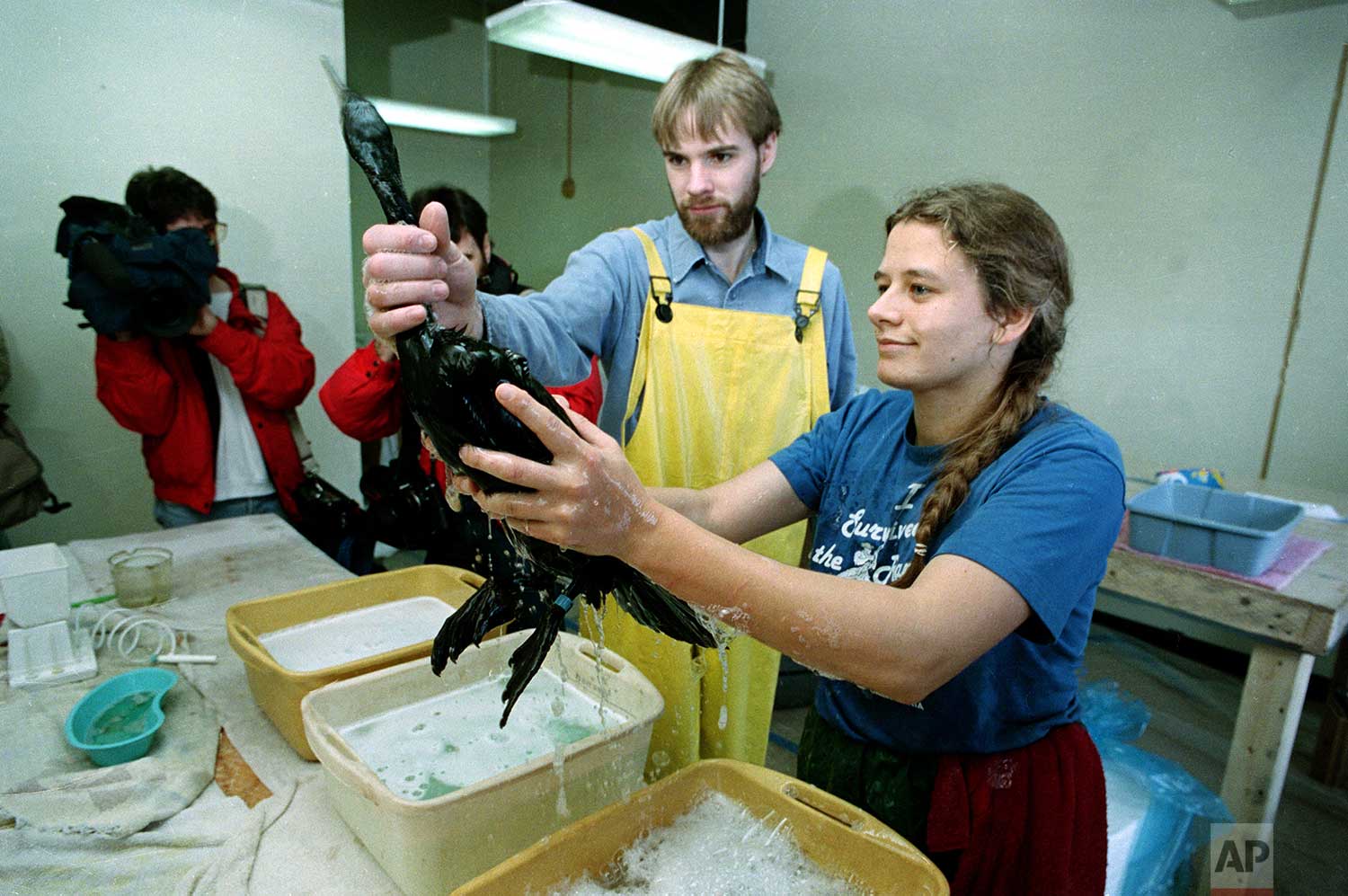Remembering the Exxon Valdez Oil spill

It was just after midnight on March 24, 1989, when an Exxon Shipping Co. tanker ran aground outside the town of Valdez, Alaska, spewing millions of gallons of thick, toxic crude oil into the pristine Prince William Sound.
The world watched as the aftermath unfolded: scores of herring, sea otters and birds soaked in oil, and hundreds of miles of shoreline polluted. Commercial fishermen in the area saw their careers hit bottom.
It’s been 30 years since the disaster, at the time the largest oil spill in U.S. history. Only the 2010 Deep Water Horizon disaster in the Gulf of Mexico was bigger.
The 986-foot (300-meter) Exxon Valdez tanker was bound for California when it struck Alaska’s Bligh Reef at 12:04 a.m. It spilled 11 million gallons (42 million liters) of crude oil, which storms and currents smeared across 1,300 miles (2,092 kilometers) of shoreline.
The oil also extensively fouled spawning habitat in Prince William Sound for herring and pink salmon, two of its two most important commercial fish species.
Fishermen and others affected by the spill dealt with ruined livelihoods, broken marriages and suicides. Exxon compensation checks, minus what fishermen earned on spill work, arrived too late for many.
Most of the affected species have recovered, but the spill led to wide-scale changes in the oil industry. Today, North Slope oil must be transported in double-hull tankers, which must be escorted by two tugs. Radar monitors the vessel's position as well as that of icebergs.

Tugboats hold the tanker Exxon Baton Rouge, right, up against the tanker Exxon Valdez as oil is pumped out of the damaged tanker that ran aground into the Prince William Sound, 25 miles from Valdez, Alaska, March 28, 1989. Exxon Valdez ran aground March 24, spilling over 270,000 barrels of crude oil. (AP Photo/Jack Smith)

The Exxon Baton Rouge, smaller ship, attempts to off load crude oil from the Exxon Valdez in Prince William Sound, Alaska on March 26, 1989. The ship ran aground spilling more than 270,000 barrels of crude oil. Experts call it the United State's worst oil spill ever. (AP Photo/Rob Stapleton)

Three unidentified men listen to Exxon Oil officials, in Cordova, Alaska on March 29, 1989, talk about the 10.1 million gallons of oil that spilled from one of their tankers after it ran aground in Prince William Sound. The residents of Cordova spent about three hours with officials. (AP Photo/Rob Stapleton)

Sea lions get oil on them as they swim in the water and sit on the rock at Prince William Sound, Alaska, Sunday, April 2, 1989. They are about 50 miles from the grounded tanker Exxon Valdez that ran aground March 24, spilling more than 10 million gallons of oil. Clean up efforts are underway. (AP Photo/Jack Smith)

The grounded tanker Exxon Valdez, left, unloads oil onto a smaller tanker, San Francisco, as efforts to refloat the ship continue on Prince William Sound, 25 miles from Valdez, Alaska, April 4, 1989. On March 24 the Exxon Valdez grounded on Bligh Reef and started to leak oil totaling 260,000 barrels, the largest oil spill in U.S. history. The tanker's remaining 1 million barrels of oil were removed from the hold of the damaged vessel. (AP Photo/Rob Stapleton)

Troy Adamson, left, and Nicolette Heaphy clean a cormorant that had been covered in oil at the bird cleaing center in Valdez, Alaska, April 4, 1989. Birds and other animals have been covered in oil as a result of the massive spill from the tanker Exxon Valdez that ran aground in Prince William Sound on March 24. (AP Photo/Rob Stapleton)

Rick Zufelt of Soldotna, Alaska, wipes spilled crude oil off a rock on the beach of Naked Island on Prince William Sound, Alaska, Friday morning, April 7, 1989, in an effort to clean the remnants of the Exxon Valdez tanker disaster of March 24. Zufelt, who works for a company contracted by Exxon to clean up the oil, is using a special oil absorbant rag. (AP Photo/John Gaps III)

A local fisherman inspects a dead California gray whale on the northern shore of Latoucha Island, Alaska, Sunday afternoon on April 9, 1989. The whale was found over the weekend in the oil-contaminated waters of Prince William Sound. Wildlife experts later determined that the whale had died before the Exxon Valdez oil spill occurred on March 24. (AP Photo/John Gaps III)

Crude oil from the tanker Exxon Valdez, top, swirls on the surface of Alaska's Prince William Sound near Naked Island Saturday, April 9, 1989, 16 days after the tanker ran aground, spilling millions of gallons of oil and causing widespread environmental damage. (AP Photo/John Gaps III)

Facing the loss of an anticipated $12 million herring harvest, Cordova District Fisherman United president Jerry McCune suffers through a meeting of local fisherman discussing their bleak future, April 10, 1989, Cordova, Alaska. "We are fishing," says a local businessman. No fishing, no business. No Business, no economy. No economy, no Cordova." (AP Photo/John Gaps)

High winds on Prince William Sound push crude oil up into an inlet on Squire Island, Alaska, April 10, 1989. The massive oil spill from Exxon Valdez continues to contaminate the Sound after the tanker ran aground March 24. (AP Photo/John Gaps III)

Thick crude oil washed up on the cobble beach of Evans Island sticks to the boots and pants of a local fisherman in Prince William Sound, Alaska, on April 11, 1989. The Exxon Valdez tanker oil spill on March 24 has blackened hundreds of miles of coastline. (AP Photo/John Gaps III)

Sea lions swim in the southern bay of Naked Island Tuesday, April 12, 1989 as the crippled oil tanker Exxon Valdez sits at anchor in Alaska's Prince William Sound. The tanker spilled some 10 million gallons of crude oil into the sound, causing widespread environmental damage, when it ran aground 20 days earlier. (AP Photo/John Gaps III)

A clean-up worker rakes through crude oil, contained by floating booms off the waters of Prince William Sound, Alaska, April 16, 1989. The oil, contained here in Snug Harbor off Knight Island, was later sucked off the water by a U.S. Coast Guard skimmer. Oil from the tanker Exxon Valdez continues to foul the waters of southern Alaska. (AP Photo/John Gaps III)

A worker makes his way across the polluted shore of Block Island, Alaska, Sunday, April 17, 1989, as efforts are underway to test techniques to clean up the oil spill of the tanker Exxon Valdez in Prince William Sound. The worker periodically uses the bucket to scoop up oil washing back onto shore from the containment booms. (AP Photo/John Gaps III)

A diamond of containment boom protects the holding pens at Tutka Lagoon fish hatchery in Homer April 17, 1989. The floating pens contain more than 40 million tiny pink salmon which must be released in a few weeks. Hatchery workers also have stretched booms across the mouth of the lagoon to keep out oil from the nation’s worst spill. The Tutka hatchery is located on the south side of Kachemak Bay where oil from Prince William Sound has not yet penetrated. (AP Photo/Melon Grover)

Crews use high pressured hoses to blast the rocks on this beach front on Naked Island, Alaska, April 21, 1989. This is one of only two beaches that are being worked on, of the 58 beaches in the Prince William Sound. On March 24, the crude oil tanker Exxon Valdez grounded on a reef and spilled nearly 11 million gallons of oil in the waters. (AP Photo/Rob Stapleton)

An oil covered bird is examined on an island in Prince William Sound, Alaska in April 1989. A massive oil-slick resulted after the tanker Exxon Valdez ran aground about 25 miles from Valdez, Alaska. (AP Photo/Jack Smith)

Exxon Corp president Lee Raymond, left, addresses the company's shareholders during their annual meeting, Thursday, May 18, 1989, Parsippany, New Jersey. Company chairman Lawrence Rawl is at right. About 250 demonstrators gathered outside the suburban hotel where the meeting was held, about 35 miles west of New York City. Man in center is unidentified. (AP Photo/Mike Derer)

People in Kodiak carry signs to protest the Exxon oil spill in Anchorage, Alaska, Friday, May 27, 1989. The protest march and related activities involving hundreds of people lasted about 1.5 hours. (AP Photo/Marion Stirrup)

Steve Provant, Alaska Department of Environmental Conservation's on-scene clean-up coordinator, examines oily rocks on Green Island, June 25, 1989 in Prince William Sound. The Coast Guard, which is overseeing Exxon's clean-up effort, signed off on this section of beach declaring crews had "completed removal of gross contamination." But now the oil is back. (AP Photo/Jack Smith)

Around 200 people showed up at Fiesta Island in San Diego, Monday, July 17, 1989 to protest the use of Exxon products. (AP Photo/Brent Clingman)
Text from AP news story, AP PHOTOS: Remembering the Exxon Valdez oil spill, by Rachel D’oro.
